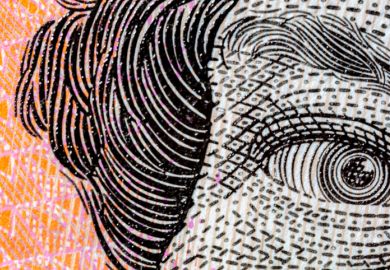This volume, edited by two professors of finance at the Yale School of Management, is an all-embracing historical survey of the financial innovations that have changed the world. The 21 essays by a distinguished and adventurous group of historians and economists trace the "origins of value" from its beginnings in the Near East some 5,000 years ago. The book provides startling information about how the invention of interest in ancient Mesopotamia and of paper money in China much later led eventually to today's financial tools - stocks, bonds, mortgages, cheques, mutual funds and so on - and to the creation of corporations such as the Dutch East India Company and institutions such as the New York Stock Exchange. Rather than being a comprehensive history of corporate finance, The Origins of Value consists of analyses of particular episodes in financial history that reveal much about modern financial instruments.
Innovations in finance have been based on surprisingly few basic principles. The editors single out three: "The intertemporal transfer of value through time, the ability to contract on future outcomes and the negotiability of claims." These principles underlie every essay. The simplest financial instrument is an intertemporal transfer of value - that is, a loan with interest payable by the borrower to the lender. The editors remind us that "civilisation has had an ambiguous attitude towards lending and interest". The Roman Catholic Church discouraged the use of interest during the 13th and 14th centuries, and Islam still discourages usury.
The first essay, by Marc van de Mieroop, a historian of the ancient Near East, concerns "The invention of interest". The earliest financial contracts appear to have been in the form of clay balls called bullae .
These hollow envelopes contained small clay tokens that represented some type of economic agreement. Signs impressed into the "envelope" represented the tokens sealed inside and prevented anyone from tampering with the contents of a bulla . By about 1800BC, Babylonians were using clay tablets with loan contracts written in cuneiform script and fired so as to form a permanent record of an agreement. Babylonians used a sophisticated arithmetic based on a sexagesimal system of numerals, which made ratios and multiples easy to calculate. Tablets from the old Babylonian period question, for example, how long it would take for a unit of silver to grow to 64 times its original value if the value doubled every five years - which corresponds to a 20 per cent annual interest rate that compounds every five years.
Comparable examples from China are discussed by Valerie Hansen and Ana Mata-Fink. Chinese financial contracts go back to the Zhon period (10-221BC), when they were written on bronze vessels. Retail loans found at Changan on the Silk Road dating from the Han Dynasty (206BC-220AD) may be the first use of portable assets as security for a loan. As for the second foundational principle of finance, the ability to contract on future outcomes, a classic example would be life insurance. Oscar Gelderblom and Joost Jonker document the development of modern futures trading and options trading in Amsterdam in the period 1550-1650 and reveal that the early Dutch options are the precursor of today's markets in derivatives.
Negotiability of claims, the third principle, is a defining characteristic of a capital market such as the New York Stock Exchange. As the editors note, although "negotiability does not make finance, it makes it easier".
Essays by Ned Downing and by Richard Sylla explain how historical forces shaped the liquidity of this powerful institution.
The first application of negotiability, however, was in China, where it reached its most dramatic expression in the early 11th century AD with the invention of paper money by the Song Dynasty after the Tang Dynasty fell in 907AD. Before this, the Chinese had used bronze coins for currency rather than precious metals such as gold and silver, which were used in the Mediterranean and in the Near East. The Chinese could do this because of the Chinese state's overriding dominance of the economy.
As Richard von Glahn explains in an illuminating essay (which the editors dub "the first truly comprehensive study of the development of paper money in China"), unlike in the West: "Chinese monetary thought and policy was predicated on enabling the ruler to overcome the vicissitudes of dearth and plenty and to provide for the material needs of his subjects... by tightly controlling the supply of money to ensure stable prices and ample supplies of goods." Chinese philosophers and statesmen always asserted that "money is an artefact of the supreme ruling authority". They believed that it was the ruler's stamp and not the intrinsic value of the monetary medium that conferred value. With such a belief among the rulers, it is not surprising that paper money should emerge.
The idea came about like this. The Tang Government had used bronze coins, but when bronze became scarce it introduced an iron coinage, too. The inconvenience of transporting this coinage led the Tang rulers to create depositories at their imperial capital where merchants could deposit coins in return for promissory notes known as feiqian ("flying cash") redeemable in provincial capitals. The Song Dynasty continued this practice. These "exchange bills" gained significant credibility. In 1005, the Prefect of Chengdu, Zhang Yong, undertook strategic reforms to try to stabilise the monetary system and regulate what had become a de facto paper currency.
Technological innovations in paper-making and printing also helped the advance of paper money. The experiment lasted more than 400 years.
Other chapters detail the development of the first modern corporation, the Dutch East India Company, which in 1602 provided a novel mechanism for financing the exploration and commercial expansion of European business ventures around the globe; and the earliest mutual funds, which were developed in Holland after the financial crisis of 1772-73. The Dutch also created a market for Russian debt by subscribing directly to loans and issuing loan-backed bonds themselves; the same bankers repackaged the early loans of the young US in the late 18th century. In 1818, the House of Rothschild issued the first "Eurobonds", in which its loan to Prussia was underwritten by allowing the country to repay the loan in a currency not its own. There is discussion, too, of King Leopold of Belgium, who took corporate finance to its most inhuman extent by turning the Congo into a privately held corporation at the end of the 19th century.
All this history makes for fascinating reading and provides a good grounding for understanding the creation of corporate capitalism - the defining economic institution of the 20th century. Its growth in the early part of the century culminated in the first age of globalisation.
So what lessons can we learn? In one of the later essays, Robert Shiller writes about the invention of inflation-indexed bonds in early America. A modern example of this is Fannie Mae, the mortgage insurance agency. I was particularly interested in this essay because Shiller, a professor of economics at Yale, wrote Irrational Exuberance , in which he warned of the 2000 stock market collapse, and then, in a recently revised edition, of a significantly overpriced housing market likely to collapse in much the same way as the late 1990s stock market bubble.
His clinical and daunting study of the psychological origins of volatility in financial markets also warns us of the extraordinary growth in the mutual funds industry. The disappearance of the individual stockholder as the backbone of the US stock market has been one of the least recognised but most profound economic trends of the past half century. Direct ownership of stock by US households has declined from 91 per cent in 1950 to just 32 per cent today. The 9 per cent ownership in 1950 by financial institutions, such as mutual funds, crossed the 50 per cent mark in 1983, and now stands at 68 per cent of all stocks. This is a dangerous concentration of ownership, and it is hard to imagine that an economy dominated by individual stock ownership will ever return.
Although Shiller's recent unnerving warnings do not belong in The Origins of Value , they cannot be ignored. As the editors note: "Innovations in the modern world of finance have come to be almost expected, financial instruments spring from the minds of investment bankers almost overnight, and then are analysed, valued, traded, saved and hedged themselves - sometimes to be replaced by new financial instruments, and other times to be part of the permanent toolkit of financial engineers and investors."
The incredible ability of human beings to create has now reached frightening levels. It seems almost inevitable that such innovation must lead to abuse and self-destruction. If it achieves nothing else, this remarkable book gives us an invaluable historical perspective on a terrifying age of financial revolution.
Christopher Ondaatje retired in 1988 after some three decades as an investment banker and became a philanthropist and author. His latest book is Woolf in Ceylon .
The Origins of Value: The Financial Innovations that Created Modern Capital Markets
Editor - William N. Goetzmann and K. Geert Rouwenhorst
Publisher - Oxford University Press
Pages - 403
Price - £30.00
ISBN - 0 19 517571 9
Register to continue
Why register?
- Registration is free and only takes a moment
- Once registered, you can read 3 articles a month
- Sign up for our newsletter
Subscribe
Or subscribe for unlimited access to:
- Unlimited access to news, views, insights & reviews
- Digital editions
- Digital access to THE’s university and college rankings analysis
Already registered or a current subscriber? Login



